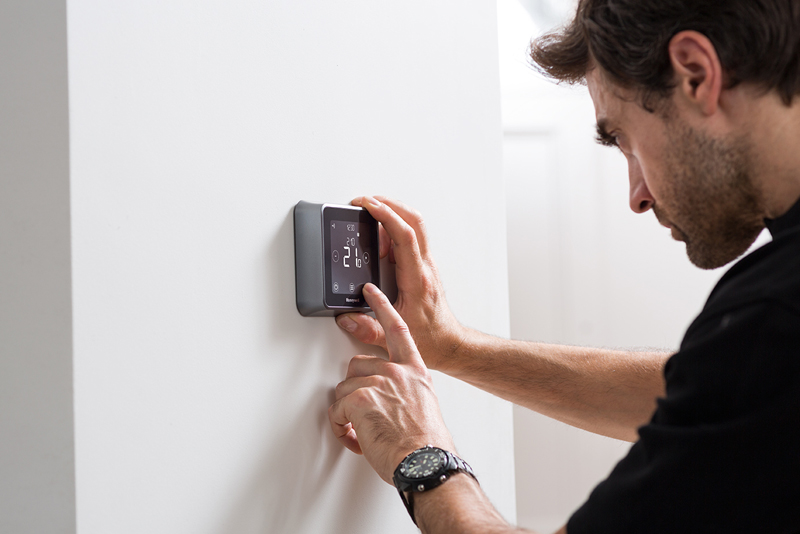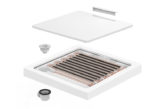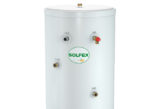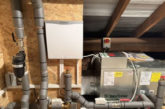
Recent Government legislation around the efficiency of heating systems and growing interest in the smart home have placed heating controls firmly in the spotlight. With a wide variety of models available, deciding which type is best for each job can be tricky. For example, the merits of wired vs wireless thermostats is a debate which divides installers across the country. Here, Martin Wilson, National Sales Director at Honeywell, discusses.
These days, it seems everything electrical is wireless; the days of corded phones and broadband cables are something of a distant memory. However, when it comes to the thermostats, the jury is still out.
Some may argue that wired is best for reliability, whilst others might say that wireless offers more flexibility and ease of installation. The truth is, both are good options, and each has its benefits and drawbacks. Deciding which one to specify usually comes down to the property type and homeowner preference.
Wireless
Installing a wireless product is an easier option if the existing wired thermostat can be isolated from the circuit. Wiring the new wireless relay box to the boiler avoids the need for running new cable along the wall, reducing the risk of damage to décor when retrofitting a control.
Wireless thermostats also give the homeowner flexibility to position their thermostat in the most suitable place to measure the temperature of the living areas, and for this reason they are usually the homeowner’s preferred choice. However, the user needs to be properly educated on the correct positioning of their wireless thermostat within the home.
For instance, some users may hide the unit away in a corner, where it would not have enough air flow around it to accurately measure the room temperature. Or, it might be placed on a window ledge in direct sunlight, which would also skew the reading. The rule of thumb is to place the thermostat in the room which heats up last, ensuring other radiators remain warm until the whole house is up to temperature. Generally, it is inadvisable to install a thermostatic radiator valve (TRV) in the same place as a room thermostat as the two may be in conflict.
Wired
Whilst wireless controls are becoming the preferred option for many, there is still a large replacement market in which wired thermostats are a straightforward, cost-effective option.
Certain types of properties, such as period buildings with solid walls, suffer from low wireless signal strength. In these cases, wired is the best choice for reliability as it ensures constant communication between the thermostat and boiler.
Safety first
Whichever option is chosen, the first step is to assess the scope of the work required and whether the installer is qualified to undertake the electrical work themselves, or whether they should consult a professional electrician. Particularly for those with limited experience of installing controls, or for complex wiring jobs, it’s always better to be safe than sorry and consult another trusted tradesperson.
Manufacturer training courses should cover the correct way to wire in products, so for any installer looking to brush up on their skills, this is a good place to start. Wiring guides can also easily be found online and viewed on a smartphone or tablet to save carrying a load of paper manuals around.
The installer’s view
Drew Styles of Drew Styles Plumbing & Heating comments: “When it comes to specifying for a job, it comes down to two things: the homeowner and the home.
“Sometimes it is simply a generation game, whereby the younger generation want the flexibility of having a wireless thermostat. Thanks to mass advertising in the consumer market, homeowners sometimes know exactly what they want before they have even called me.
“On the other hand, some older people tend to lean towards a wired thermostat as this is simply something they are used to and is a central point for the home where they can adjust the temperature.
“Both have their pros and cons; however, it really comes down to the site. Wireless tends to be more flexible for both installation and the homeowners’ needs. However, things to watch out for with a wireless are the battery life, signal strength and sometimes where the homeowner positions the thermostat in the home – obviously on top of a heater isn’t ideal.
“On the other hand, wired thermostats can be beneficial if you are working at a remote location where signal strength is low. Whilst it doesn’t always give the neatest of appearances, it always has guaranteed signal. However, unlike a wireless thermostat, a wired thermostat can’t always be fitted where the homeowner wants it to be.”
The wide range of controls on the market means there is a model to suit every application. Spending just a short amount of time assessing the homeowner’s lifestyle and preferences can help installers specify the right one.












